PDF Download - Livestock handling guidelines
Health and safety risks
Livestock handling can include working with livestock in paddocks, laneways, yards, cattle transportation, feedlots, abattoirs, saleyards and activities relating to on-farm sales.
Workers and other persons who conduct livestock handling are at risk of sustaining injuries such as bone fractures, bruising, dislocations, crush injuries, lacerations and in some cases may result in a fatality.
Hazards
Design and layout of livestock yards, ramps and facilities
Some examples of hazards that can expose people to risk of injury are:
- poor design of livestock yards that hinder the flow of animals or cause bottle necks and blockages while moving livestock through yard systems
- ramps that don’t have suitable walkways, gates and access points
- uneven surfaces in the yards and ramps
- poor maintenance of yards, ramps, fences, gates and associated structures.
Animal behaviour
Livestock can be unpredictable when stressed and can lead to sudden changes in behaviour.
Some people handling livestock may not have the appropriate knowledge and awareness of animal behaviour which can expose them to risk of injury.
Consider the hazards of bulls, cows with calves, lone cattle as well as the variations in behaviour between different breeds.
Work health and safety duties
Everyone in the workplace has a work health and safety duty.
Employers
Employers have a primary duty to ensure, so far as is reasonably practicable, workers and other people are not exposed to health and safety risks arising from the business or undertaking.
This duty requires the employer to eliminate health and safety risks, so far as is reasonably practicable or, where elimination is not possible, to introduce control measures to minimise the risks.
For livestock handling this includes ensuring, so far as is reasonably practicable the:
- safe design, provision and maintenance of livestock handling plant and structures
- safe erection, alteration, dismantling and use of livestock handling facilities, and wear any required PPE
- safe use, handling, storage and transport of livestock handling equipment.
The duty also includes providing any information, training, instruction or supervision that is necessary to protect all persons from risks to their health and safety arising from work carried out as part of the conduct of the business or undertaking.
Workers and others
Workers and other people (such as visitors, contractors, veterinarians and livestock transporters) at the workplace must:
- take reasonable care for their own health and safety
- co-operate with reasonable policies, procedures and instructions
- not adversely affect other people’s health and safety.
Designers, manufacturers, suppliers and importers
Designers, manufacturers, suppliers and importers of plant or structures must ensure, so far as is reasonably practicable, the plant or structure is without risks to health and safety.
The design stage is a good opportunity to improve the layout of livestock facilities to reduce the risk of injury.
Installing, constructing or commissioning plant or structures
People installing, constructing or commissioning plant or structures must ensure, so far as is reasonably practicable, all workplace activity relating to the plant or structure including its decommissioning or dismantling is without risks to health or safety.
Managing the risks and implementing controls
Employers need to consider all reasonably practicable control measures for the workplace.
Deciding what is reasonably practicable includes the availability and suitability of control measures, with a preference for using substitution, isolation or engineering controls to minimise risks before using administrative controls or PPE.
Cost may also be relevant, but this can only be considered after all other factors have been taken into account.
Engineering controls
Livestock yards and ramps
Modifications to the design and layout of livestock yards and ramps can greatly improve the flow of livestock and their behaviour. These changes can also reduce the need for workers to be in close proximity with livestock; if people are separated from the livestock then the likelihood of an injury is greatly reduced.
Some factors to consider are:
- the ramp design should be suitable for the stock being handled
- adjustable ramps must have appropriate safety locking devices
- ramps must have suitable walkways and access points.
Changes to the design of yards and ramps can also have productivity and efficiency benefits.
Basic yard layout
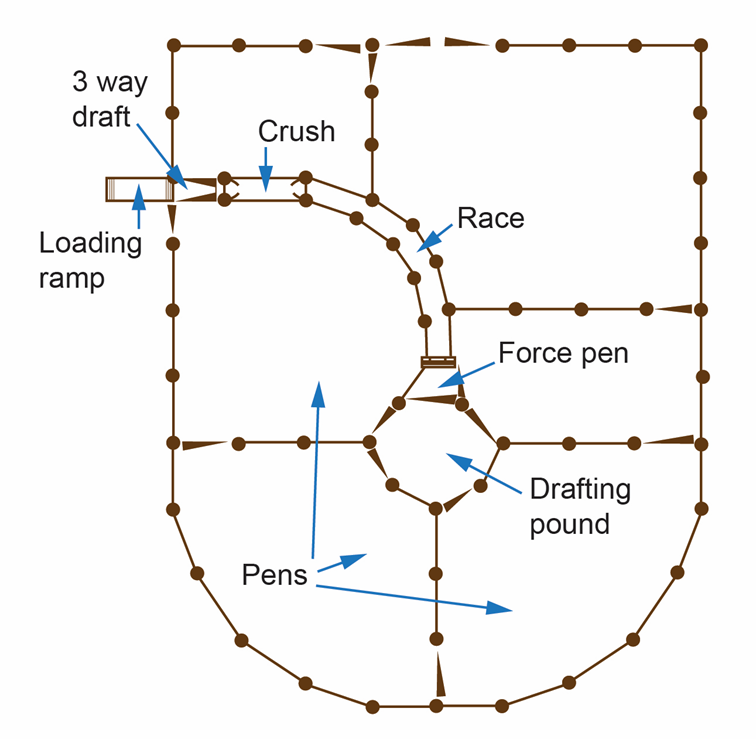
Round forcing pen
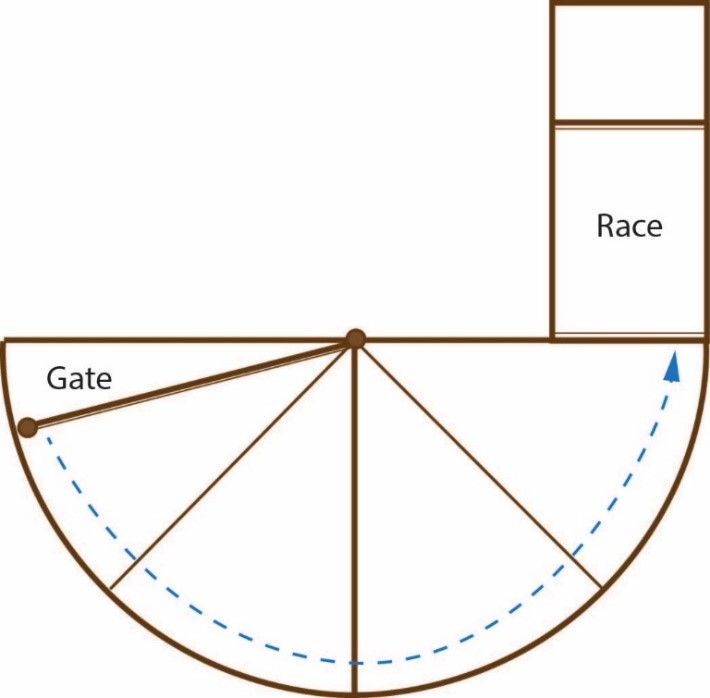
Good ramp design
Design ramps with suitable walkways, consider walkways on both sides, have the sides of ramps infilled, ensure easy access to ramp gates from the walkways.
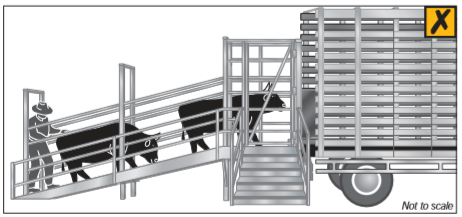
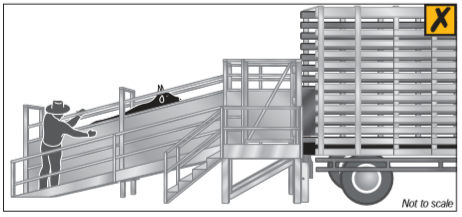
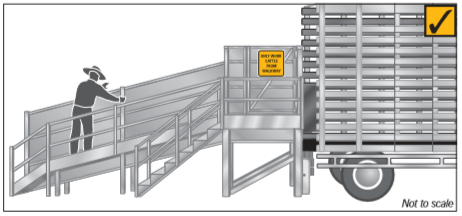
Gates
Install gate handles and latches with minimal obstructions or protrusions.
Consider where gates are placed, where to access the opening mechanisms, can they be opened externally?
Install escape gates, bottom rails no less than 300mm above the ground and safety barriers if the separation of people and animals cannot be achieved.
Chain and slot-style latches are more dangerous to operators but are a good addition in some parts of the yards to prevent cattle escapes, for example low pressure areas like holding yards.
Gate latches should be positive bolt, slam shut, spring‑loaded type, especially in forcing yards.
Ensure latches, bolts and chains on gates are in working order and robust enough to contain livestock.
Install a safety gate at the interface between transport vehicle and loading ramp.
Administration Controls
After implementing higher level controls such as engineering controls, use administrative controls to train workers in livestock handling techniques.
Effective handling techniques are vital to ensuring the safety of livestock handlers working cattle, as well as the welfare of the cattle themselves.
Provide workers with clear instructions and expectations relevant to the task and layout of the livestock facilities. Key points of cattle behaviour and handling techniques include understanding:
- the animal’s field of vision
- the personal space zones; a mob of cattle will have a collective zone
- animal behaviour.
By understanding these key factors workers will be able to handle livestock more safely and efficiently with less risk of injury and with less stress to the animal.
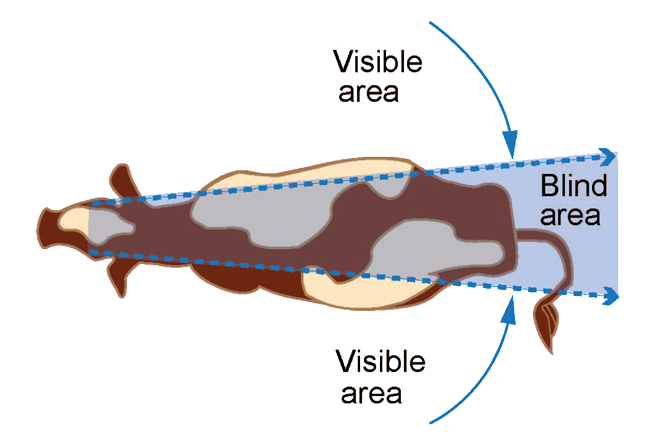
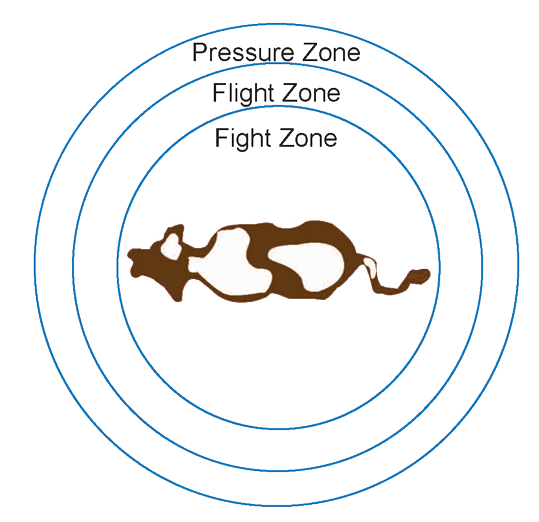
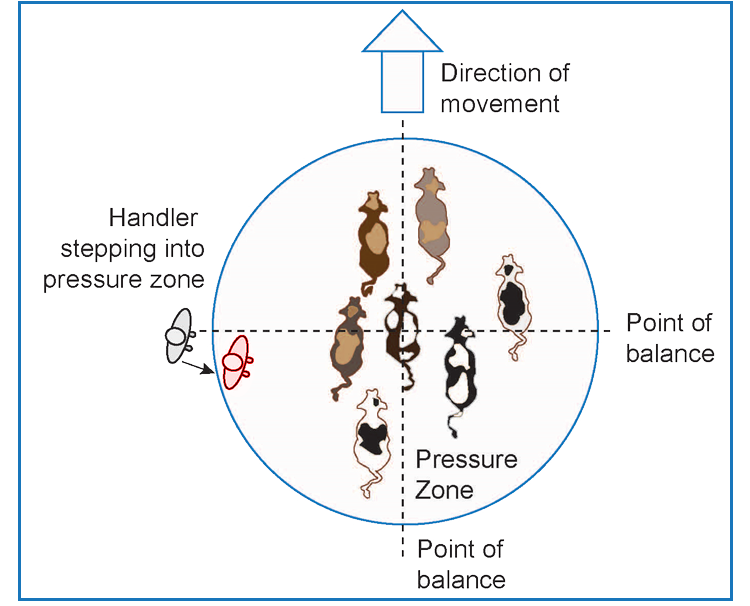
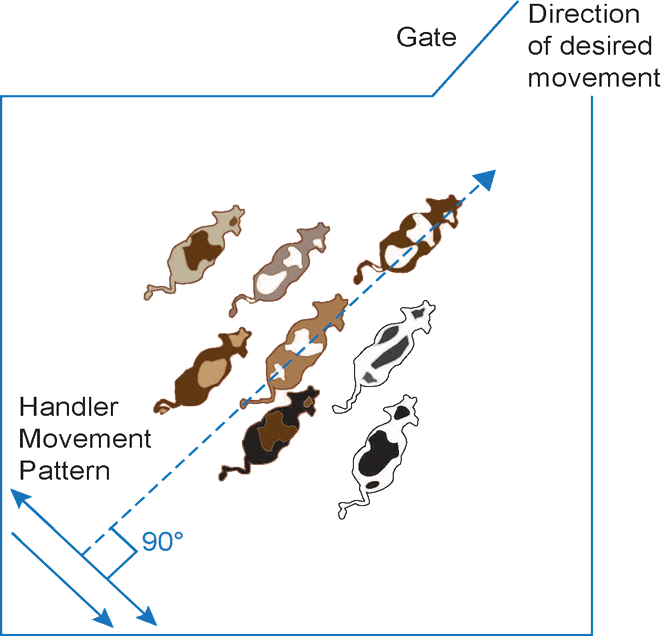
Further information
Livestock handling and transport
How to Manage Work Health and Safety Risks – Code of Practice
Managing the Risks of Plant in the Workplace – Code of Practice
Guide to managing risks of cattle handling – Safe Work Australia
Working with livestock on farms – SafeWork NSW
Separation of cattle and people while loading cattle at sale yards (In-fill on ramp walls): A health and safety solution – WorkSafe Victoria
Guide for safe design of livestock loading ramps and forcing yards – Australian Livestock and Rural Transporters Association




